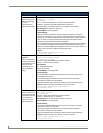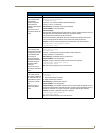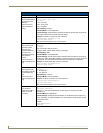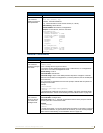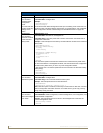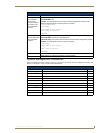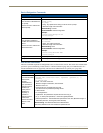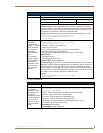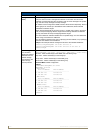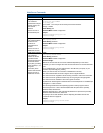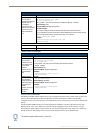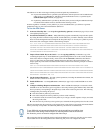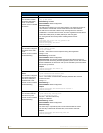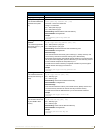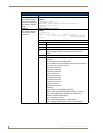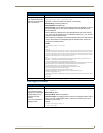
CLI (Command Line Interface)
174
NXA-ENET24 - Software Management Guide
IP Filter Commands (Cont.)
Command Function
management
(Cont.)
Command Usage
• If anyone tries to access a management interface on the switch from an invalid
address, the switch will reject the connection, enter an event message in the system
log, and send a trap message to the trap manager.
• IP address can be configured for SNMP, web and Telnet access respectively. Each of
these groups can include up to five different sets of addresses, either individual
addresses or address ranges.
• When entering addresses for the same group (i.e., SNMP, web or Telnet), the switch
will not accept overlapping address ranges. When entering addresses for different
groups, the switch will accept overlapping address ranges.
• You cannot delete an individual address from a specified range. You must delete the
entire range, and reenter the addresses.
• You can delete an address range just by specifying the start address, or by specifying
both the start address and end address.
Example: This example restricts management access to the indicated addresses.
Console(config)#management all-client 192.168.1.19
Console(config)#management all-client 192.168.1.25 192.168.1.30
Console(config)#
show management
This command
displays the client IP
addresses that are
allowed manage-
ment access to the
switch through
various protocols.
Syntax:
show management {all-client | http-client | snmp-client | telnet-client}
• all-client - Adds IP address(es) to the SNMP, web and Telnet groups.
• http-client - Adds IP address(es) to the web group.
• snmp-client - Adds IP address(es) to the SNMP group.
• telnet-client - Adds IP address(es) to the Telnet group.
Command Mode: Global Configuration
Example:
Console#show management all-client
Management IP Filter
HTTP-Client:
Start IP address End IP address
-----------------------------------------------
1. 192.168.1.19 192.168.1.19
2. 192.168.1.25 192.168.1.30
SNMP-Client:
Start IP address End IP address
-----------------------------------------------
1. 192.168.1.19 192.168.1.19
2. 192.168.1.25 192.168.1.30
TELNET-Client:
Start IP address End IP address
-----------------------------------------------
1. 192.168.1.19 192.168.1.19
2. 192.168.1.25 192.168.1.30
Console#



